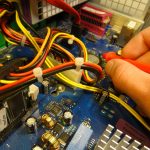Electrical installation refers to the process of setting up electrical systems within a building or structure to provide power, lighting, and other electrical functions. This encompasses various components such as wiring, switches, outlets, circuit breakers, and electrical panels. Electrical installations must comply with local building codes and safety regulations to ensure the safety of occupants and property.
Key steps in electrical installation include:
Design: Planning the layout of the electrical system based on the building’s needs and requirements. This involves determining the location of outlets, switches, and lighting fixtures, as well as sizing wires and selecting appropriate electrical components.
Preparation: Gathering all necessary materials and tools for the installation, such as wires, conduits, junction boxes, and electrical devices.
Routing Wiring: Running electrical wires through walls, ceilings, and floors according to the planned layout. This may involve drilling holes, pulling wires through conduits, and securing cables to the structure.
Installation of Devices: Mounting electrical outlets, switches, lighting fixtures, and other devices at their designated locations. Proper connections must be made according to the wiring diagram to ensure functionality and safety.
Conclusion:
It’s crucial to hire a licensed and experienced electrician for electrical installations to ensure compliance with regulations and safety standards. Improper installation can lead to electrical hazards, fire hazards, and damage to equipment. Regular maintenance and periodic inspections are also necessary to ensure the ongoing safety and reliability of the electrical system.









